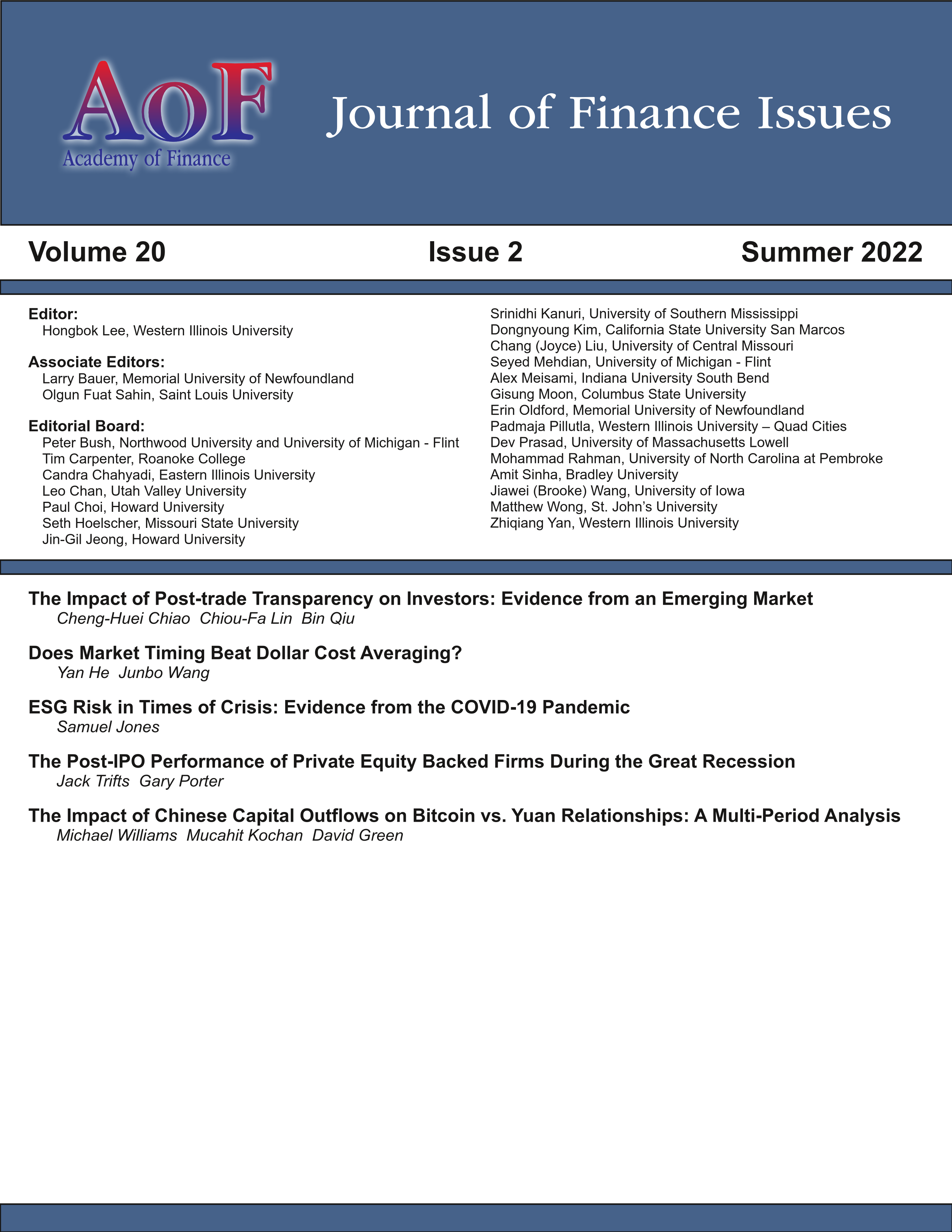Does Market Timing Beat Dollar Cost Averaging?
DOI:
https://doi.org/10.58886/jfi.v20i2.3353Keywords:
Dollar cost averaging; Market timing; Perfect foresightAbstract
This paper explores several methods for investing a series of monthly cash contributions in an equity index, such as the S&P 500 or the Nikkei 225. The dollar cost averaging (DCA), three variations of market timing (MT1, MT2, and MT3), and 12-month perfect foresight (PF) are examined, and they are built on the same assumptions, such as monthly cash inflows, no borrowing of cash, and no selling of equity. The PF outcomes, unachievable by human beings, serve as the optimal boundaries. Our results show that in both the U.S. and Japanese markets, the PF dominates the DCA, while the MTs tend to deliver similar results as the DCA. Thus, the DCA seems an effective investment method.
Downloads
Published
2022-10-12
How to Cite
He, Yan, and Junbo Wang. 2022. “Does Market Timing Beat Dollar Cost Averaging?”. Journal of Finance Issues 20 (2):10-24. https://doi.org/10.58886/jfi.v20i2.3353.
Issue
Section
Original Article





